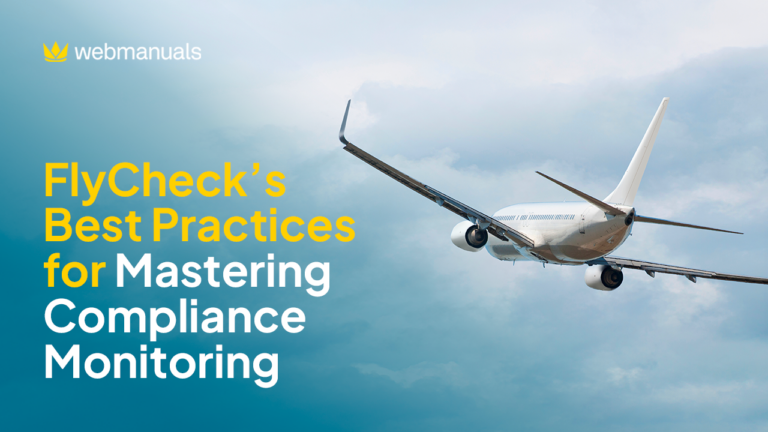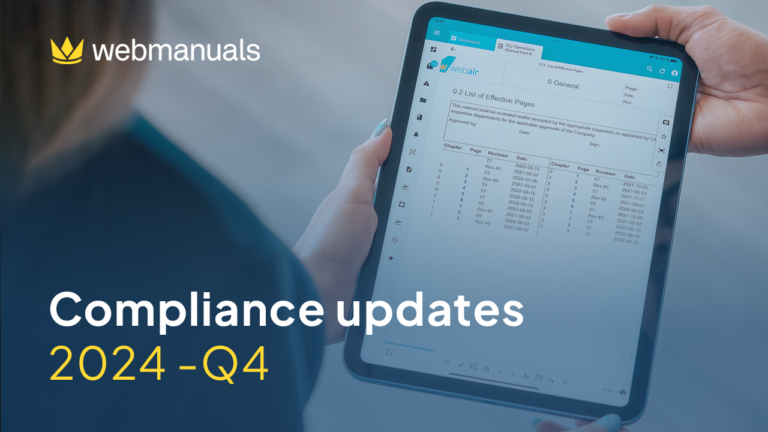Web Manuals’ high purpose is to create a strong community advocating for safety and regulatory compliance across the whole industry. To reach this goal, we have designed GO DIGITAL as a platform to include diverse stakeholders in a shared environment that fosters relevant discussions about the progress of aviation.
San Diego, California, was the main stage for the first in-person version of GO DIGITAL US after the pandemic. Together with documentation specialists, compliance experts, and managers in air operations, we engaged in a two-day event to educate, innovate and inspire each other on how to become digitally successful.
We had the opportunity to share with Phil Derner, NBAA Western Regional Representative. During his presentation, we discussed the importance of building a safety culture in the industry and the biggest threat to aviation safety. He shared valuable insights learned from his experience representing over 11.000 aviation companies in the US.
Current workforce challenges
Phil Derner: Before the pandemic, everyone talked about the pilot shortage. Once the pandemic happened, everybody thought, “that goes the pilot shortage,” and I said, “Give it a minute. It’s going to be back and worst”. Now we are short in every single role in aviation and non-aviation roles as well.
We are going to classrooms and schools, working with non-profit organizations that serve students, trying to inspire people to go into aviation -and hopefully business aviation specifically- and we want to give them resources. Recently in Northern California, we hosted an event for aircraft mechanic mentors. We invited four schools to sit at different tables, and we had one expert on a different topic of conversation. Those topics could be career paths, resume preparation, or job coaching. The idea was to give students awareness about various career ideas, not just the airlines, and to give them tangible skills and lessons they can carry elsewhere and make a difference.
Another topic that affects the workforce directly is diversity and inclusion. We have to ensure that our industry widens the number of people we’re reaching out to and appeals to them. We have to be able to recruit a diverse group of people, which is different from what we have been doing in decades past—creating similar programs in schools, ensuring that we’re bringing resources, scholarships, and internships to all these different schools. We have a bunch lots of programs pushing awareness. This is vital to tackle the workforce issue.
Sustainability is on the agenda
Phil Derner: Sustainability is another big deal for us. Sustainable fuel is available in California and Washington state, but not everywhere. We are trying to bring awareness about sustainable aviation fuel, which is not an additive made from feedstock and can be used in aircraft to improve the carbon footprint. It’s not just business aviation. If you have flown in or out of LAX (Los Angeles International Airport) in the last two years, you have probably flown using Sustainable aviation fuel and not even known it.
We are working on all kinds of things on a national level. We are working on legislation to blend the tax credits to make it cheaper to produce. You can encourage your company to invest in sustainable fuel because it’s the right thing to do; looking for the environment—advocate with managers and decision-makers. We are also working on bringing greener equipment to airports. Everything that we do has the opportunity to be a little greener.
Safety is number one
Phil Derner: When it comes to safety, we talk about safety culture, and you must be very proactive. We have to play a proactive role in talking because business aviation is built in silos; we have to break down those silos and learn from one another. If you’re not opening your doors to speak to others, we will have a tough time learning and maintaining that safety culture. Having events like this that drive the discussion it’s crucial.
When we talk about safety culture, we look at aviation safety history and I’ll use the airlines as an When we talk about safety culture, we look at aviation safety history, and I’ll use the airlines as an example. When I was a kid, we looked at the annual aircraft fatalities in the double digits every year. And look how far we’ve come in the last 30 years. We look at the previous decade; around a billion people have flown to the US airline industry, and we only had one fatal airline passenger crash in the United States in 2013. That’s pretty incredible. We’re in a panicle in aviation safety; we have made remarkable improvements because of the challenges that we had in our past. Today our biggest threat is complacency. We can’t think that we got this. That’s something to keep in mind and share to bring those conversations and have those discussions. Just because it’s in the past, or something hasn’t happened in a long time or hasn’t affected you directly, it can’t happen to you.




